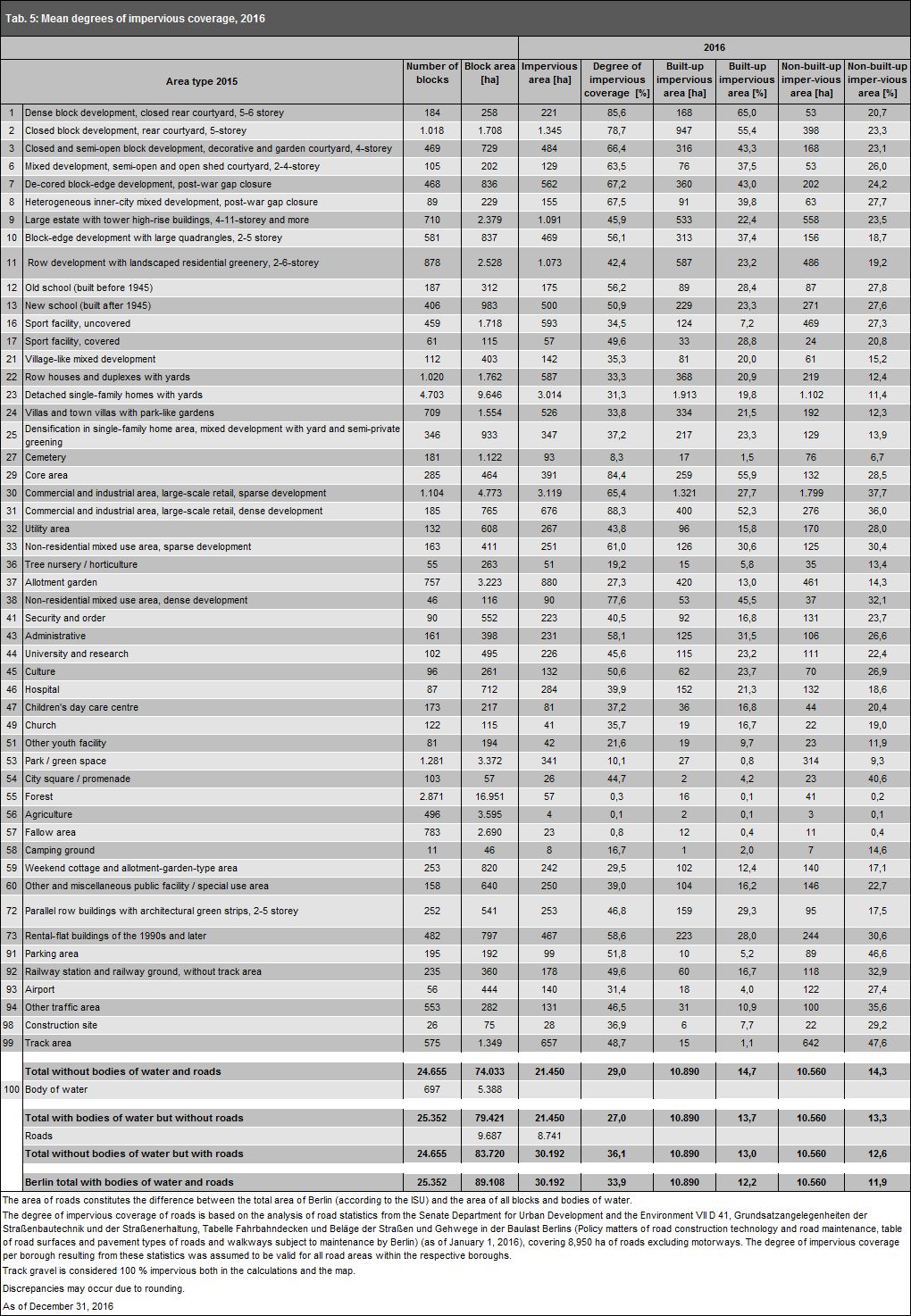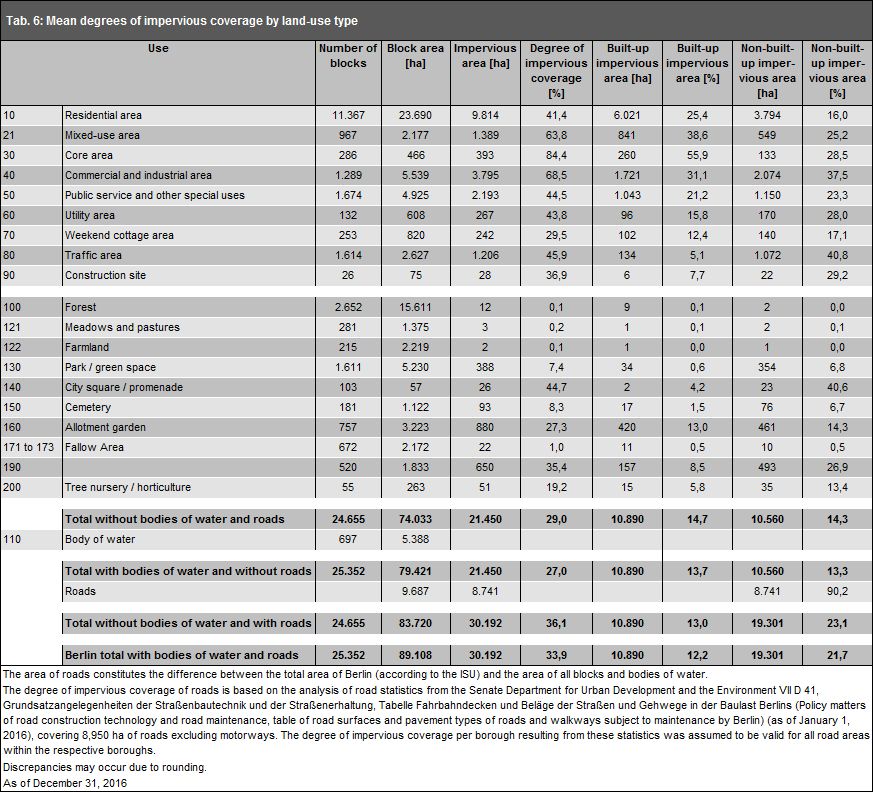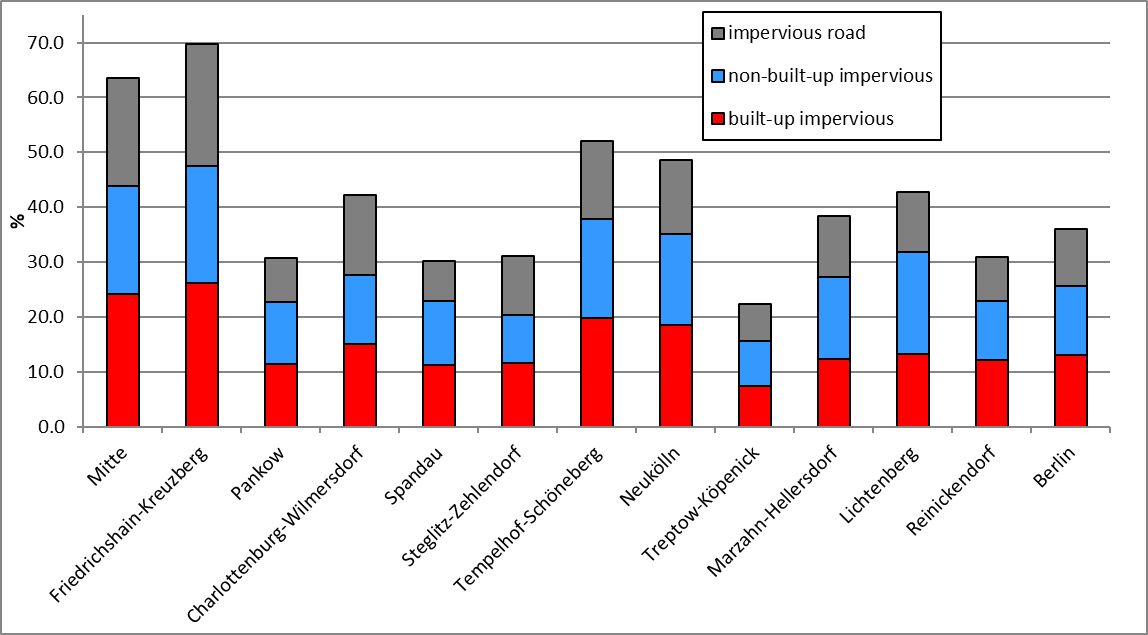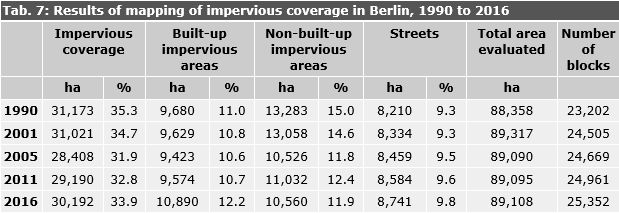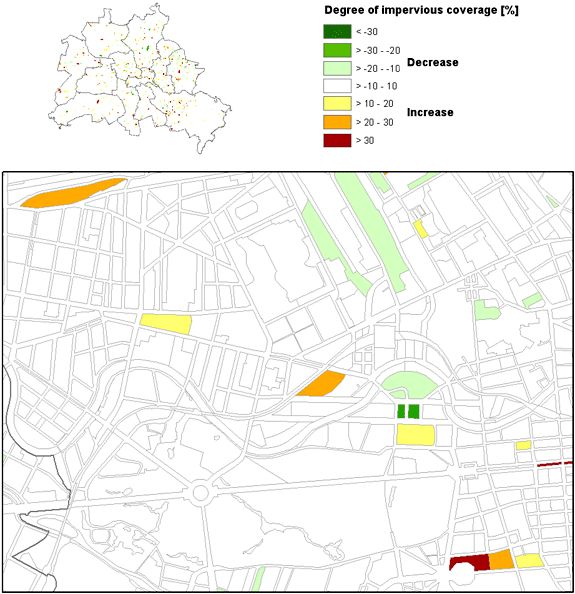For the non-built-up impervious area, the picture is somewhat different. The apparent decrease by 2.8 % between 2001 and 2005 may on the one hand be due to the fact that on the old maps, some green and open-space categories (e.g. Forest and Agriculture) were assigned estimated values for their non-built-up impervious portions, values which we today recognize as having been set too high. Since these areas constitute a major share of the municipal area, the degree of impervious coverage was overestimated for the non-built-up impervious areas overall. On the other hand, due to the problems mentioned above regarding the interpretation of the satellite data, the non-built-up impervious areas were more likely to be underestimated under the new method. These assumptions are rather more plausible than the supposition that any reduction in impervious areas actually took place in the municipal area. The decrease in the non-built-up
impervious area by 0.5 % between 2011 and 2016 is not due to an actual decline in impervious coverage but due to an improved building stock data base. Overall, the proportions of built-up and non-built-up impervious areas have been identified more precisely.
With regard to the ascertainment of the impervious road area, the roughly estimated values available in 1990 could not be replaced by values from the Road-Building Authority until 1997. These were used for the evaluations in 2001. For the impervious coverage mapping projects in in 2005 and 2011, degrees of impervious coverage for streets, recorded by borough based on 2006 data, were obtained for the entire city (Gerstenberg & Goedecke 2011). A slight increase in the degree of impervious coverage attributable to the road category and caused by road-building measures, primarily in East Berlin, certainly seems plausible. Similarly, the degree of impervious coverage of roads, as of 2016, were applied by borough for the 2016 analysis (SenStadtUm 2016b, Goedecke & Gerstenberg 2013 method).
Change Mapping of Impervious Coverage between 2011 and 2016
The multiple use of the procedure in 2016 also permits a comparison with the impervious coverage at block and block segment level. Figure 8 maps the changes between 2011 and 2016. Blocks with changes of greater than 10 % of the degree of impervious coverage are shown. However, in the overall accounting of the impervious coverage in the total area and at the level of area types, smaller changes have also been incorporated.
- For 424 areas, the block geometries changed considerably by more than 10 % of the previous area size between 2010 in 2015, causing pseudo-changes to appear in the impervious coverage map.
- The improved data base for the building stock and railway tracks led to pseudo-changes rather than actual changes for 718 block and block segment areas. This is the case predominantly for allotment gardens and the area type “Track area”.
In the following, some striking examples are described that serve to highlight the – at times – very case-specific reasons for differences in mapping the degree of impervious coverage for areas between 2011 and 2016.
The decrease in impervious coverage in the commercial area on Blankenburger Straße in Pankow stands out. There has been no actual change here. However, large sandy areas created in 2011 during construction activities are meanwhile overgrown, whereby a decreased impervious coverage was mapped.
Upon analysis of the orthophotos from 2016, the significant decrease in impervious coverage at Schöneweide station can be attributed to the extensive dismantling of tracks and an increased degree of vegetation coverage of the track gravel.
The similarly striking (apparent) decrease in impervious coverage around the Tempelhofer Freiheit is due essentially to the total area being divided into several block segment areas. As a result, the areas overgrown with vegetation are more prominent compared to the mean value of the former total area in the 2010 block map. A change in impervious coverage is effected by areas of formerly impervious runways and storage areas that are gradually becoming overgrown. These changes are detected by the satellite sensor and are thus mapped as partially impervious areas. New residential areas are also clearly visible in the change mapping of the overall impervious coverage. In addition to the rural town of Gatow, the two residential areas at Oskar-Helene-Heim station stand out in particular.

